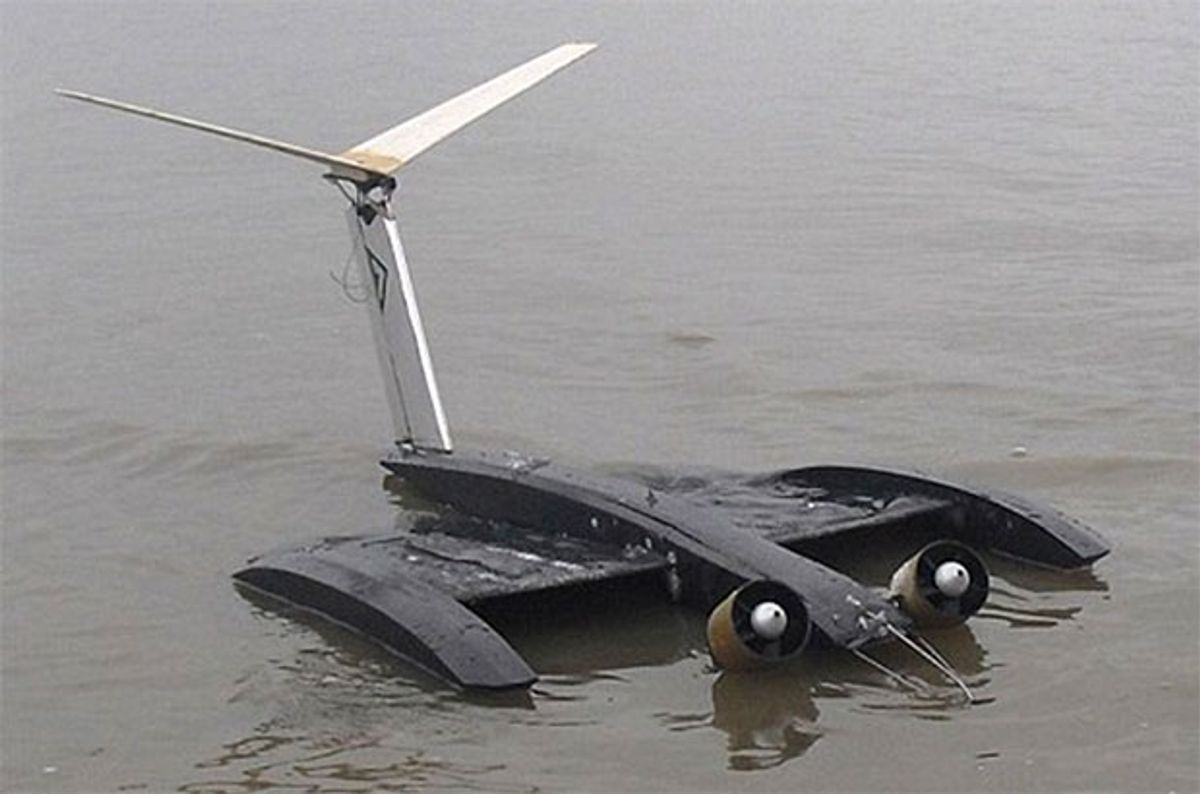Bats were clever enough to figure out how to fly without bothering to cover their wings with feathers. Good for them. And good for us too, because bats existing have helped us realize that wings composed of thin membranes work pretty well.
A team of researchers led by Professor Bharathram Ganapathisubramaniat the University of Southampton, in England, have been experimenting with adjustable bat-inspired membrane wings that also vibrate as air passes over them. They’ve mounted these wings onto a micro air vehicle that uses them (along with ground effect) to zip across water fast and efficiently.
These membrane wings aren’t just flexible, they’re also controllable. They incorporate electroactive polymers that respond to voltage by changing the wing’s stiffness, allowing you to dynamically adjust the wing shape and “dramatically” altering their performance. Because the wing is a membrane, it also vibrates as air passes over it, which creates more advantages, as the researchers explain:
“Thin and flexible wing design can improve aerodynamic fight performance at low to medium Reynolds numbers. Membrane wings can combine vehicle agility, enlarged maximum stall angle, extended maximum lift and smooth gust reaction. The main source of their benefits is suggested to rely on their inherent membrane oscillations which can energise the weak boundary layer to enforce longer flow attachment. In addition, membrane vibrations are known to enhance leading edge vortex shedding, forming large roll up vortices of low pressure content which can significantly contribute to the total lift enhancement at high incidences.”
If I were to attempt to translate all that, I would guess that the rapid wing wiggles (technical term there) helps air stick to the wing when it would otherwise break away. Air breaking away from a wing is a bad thing, and can lead to a stall or loss of control, so it’s something you don’t want to have happen. The wiggling also helps to preserve lift when the wings are tilted up, like when you’re taking off and landing, which are the bits of flight that airplanes tend to have the most trouble with.
It looks like this initial flight happened back in May of last year, but we just heard about it, so there you go. And anyway, it gives us an excellent excuse to digress on the topic of some of the futuristic vehicles that take advantage of ground effect to “fly” long distances very efficiently while carrying large payloads.
The efficiency of ground effect transportation isn’t limited to robots. In the late 1980s, the Soviets deployed a thing called an ekranoplan, which was a rather bizarre looking flying boat that depended on ground effect-generated lift to fly at up to 550 kilometers per hour over water:
Technically, an ekranoplan is a boat, not an aircraft, because it’s restricted to water. It flies, but not more than a few meters above the surface of the water, since it’s too big and heavy to lift itself out of ground effect.
Boeing also toyed with a similar idea, called the Pelican:
While able to fly at altitudes up to 20,000 feet, the Pelican would have functioned best as a trans-oceanic ground effect aircraft, with a payload of 1,400 tons and a range of 10,000 nautical miles at an altitude of about 20 feet. This is five times the payload of the largest aircraft currently in existence (the AN-225), and the Pelican would of course have to be much larger, with a 500-foot wingspan. As of 2002, Boeing was serious about developing the Pelican, but since we haven’t heard anything in over a decade and I can’t imagine even the most secretive military program would be able to disguise something that size, we have to assume that nothing ever came of this program.
All is not lost, however. The Alekseyev Central Hydrofoil Design Bureau in Russia is planning on selling a bunch of these fancy new A-050 ekranoplans to the Chinese army:
These will be able to carry up to 100 passengers at 450 kilometers per hour, with a range of 5,000 kilometers, looking totally cool and futuristic while doing it.
To bring things back around to robots, we couldn’t forget this video of a ground effect robot from ICRA 2011:
Which may, eventually, lead to a consumer ground effect train that looks something like this:
Read more about that research here.
[ University of Southampton ] via [ Daily Mail ]
Evan Ackerman is a senior editor at IEEE Spectrum. Since 2007, he has written over 6,000 articles on robotics and technology. He has a degree in Martian geology and is excellent at playing bagpipes.







